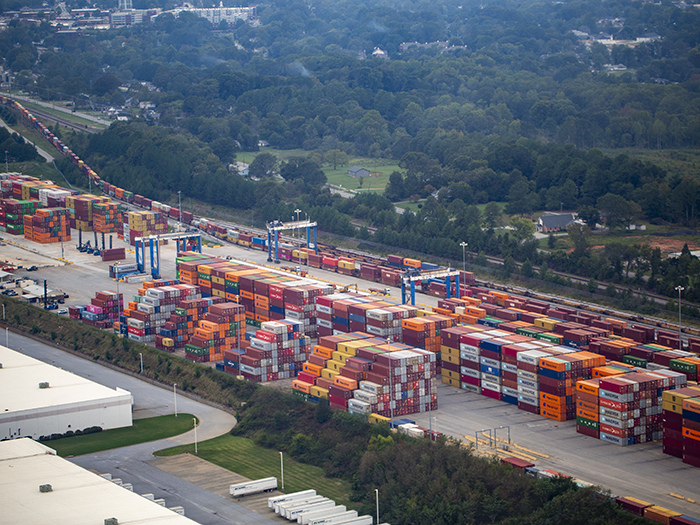5 Ergonomic Strategies for Preventing Injuries and Advancing Total Worker Health
In these times of heightened stress, it’s critical for employers to have holistic employee wellness plans in place that account for the entirety of the worker’s experience both on the job and in their lives outside work.
Even as society moves toward normalcy and most employers return to full operations, employees continue to face high levels of stress, which increases the risk of ergonomic injuries that take workers away from their jobs and cost their organizations tens of thousands of dollars in claims, treatments and indirect costs from absenteeism and lost productivity.
Total Worker Health is an approach to workplace safety, developed by the National Institute for Occupational Health and Safety (NIOSH), that considers all the ways a person’s job might impact their physical, mental and emotional health.
It is based on a tiered system of interventions and controls that include eliminating high-risk work conditions, substituting pro-health and safety policies at workplaces, evaluating and adjusting equipment and work spaces for better safety standards, and providing training that protects and empowers employees with knowledge to can help them monitor their own safety and wellbeing.
Initially designed and published in 2011, Total Worker Health remains the best-equipped plan for tackling spikes in injury risks and fluctuations in employees’ mental status today.
The holistic approach offered through the Total Worker Health structure is sure to become more critical than ever as we enter a time of higher ergonomic risks due to high stress levels and still-changing work environments with workers adjusting to a new normal at their jobs.
Estimates suggest that the risk of ergonomic injuries is set to rise by as much as 16% over the next 12 to 18 months, a figure that should prompt safety leaders in all industries to renew their investment and dedication to wide-ranging employee wellness programs.
Here are five key ways that a holistic approach to worker wellness can reduce injury risks, cut organizational costs (both direct and indirect), and promote a stronger culture of safety among the workforce.
1) Fatigue & Stress Prevention
Stress and fatigue are closely linked both to each other and to a larger risk of increased work-related injuries. Fatigue occurs when employees are unable to attain sufficient amounts of restful, recuperative sleep.
Research has shown clear causal connections between heightened stress and increased fatigue levels — stress makes it more difficult to rest, and fatigue makes it more difficult to handle the daily stressors of work and life.
The feedback loop this creates is responsible for higher risks of ergonomic injuries and accidents, as fatigue also impairs motor function, coordination and focus.
In a holistic worker wellness system, fatigue and stress can be prevented from the outset with controls that adjust scheduling and rostering practices to minimize shift work and consecutive night shifts, along with ergonomic engineering controls designed to lessen the physical impact of a worker’s tasks.
Controls may also include software to predict fatigue and manage the associated cognitive impairment.
2) Demographic-specific Ergonomic Risks
Workers of all backgrounds face shared ergonomic risks in the workplace, but those risks do not apply universally across every type of worker. Specifically, age is a significant variable in assessing the risks of ergonomic injury.
This matters because, in general, the workforce is getting older: The large baby boomer generation still composes a significant portion of the workforce, and some 79% of those workers say they don’t plan on retiring at age 65.
The average age today of a highly skilled manufacturing worker in the United States is 56, and the simple fact is that older workers face greater ergonomic injury risks than their younger colleagues.
Likewise, recovery periods away from work are longer for older workers, and factors such as lower oxygen retention in tissues, diminished flexibility, and greater fatigue levels all increase the likelihood that an older worker may suffer an injury.
All this is to say that with a total wellness approach to workplace safety, employers can use proactive thinking to support their older workers with more ergonomic resources, custom body mechanics training for older bodies, and smart scheduling that places less strain on the body and mind.
3) Hazards and Exposure
The Total Worker Health approach encourages safety leaders to take a wide-angle, eagle-eye view of their workforce and how employees interact with their work environment. Ergonomic injury hazards in the work environment can include:
- Ill-fitting or outdated equipment and workstations
- Objects that could cause slips, trips and falls
- Improperly secured equipment or item storage leading to crush injuries
- Electrical and chemical hazards
- Inclement weather or excessively hot or cold work conditions
A holistic strategy for eliminating ergonomic hazards must include a thorough review of each employee’s work environment, not just at the company- or department-level but drilling down to every workstation, computer and tool.
This kind of analysis enables engineering controls such as adjusted equipment, removal of clear hazards and climate control at work facilities, as well as administrative controls to prevent the accumulation of injury risk factors.
4) Environment
While many of the risk factors described above pertain to the work environment, there are a range of other adjustments that employers can make to the “built environment” — that is, the constructed facilities, transportation routes and workplace amenities that compose a “workplace” — to improve overall worker wellness.
Administrative controls for this purpose include ensuring healthy air quality at worksites and facilities, access to health and affordable foods, and safe, reliable transportation and access to company facilities.
Policy choices also play a role in securing environmental safety for employees.
It’s at the policy level that investment in hazard detection, risk management, work culture and stress mitigation occur, and these factors can significantly impact the overall safety of a work environment, directly impacting employee wellness.
A Total Worker Health approach aims to address all of these issues at the top of the organization, which brings us to the final major area where a holistic strategy can affect worker safety.
5) Leadership
Ultimately, the integration of Total Worker Health concepts into a functioning organizational safety plan requires investment from the top levels of company leadership.
With buy-in from C-suite leaders as well as safety managers and EHS professionals, it’s much easier to foster a culture of proactive wellness that provides the workforce with the tools and support employees need to take charge of their health and safety.
That said, it’s also true that an agreed focus on a safety strategy informed by the Total Worker Health concept makes it easier to include all levels of leadership in the process of making safety decisions.
In turn, this helps create a more inclusive program that fully encompasses all parts of the worker’s experience and all factors pertaining to the company’s success, from costs and productivity to a positive company culture that keeps turnover low and morale high. &










